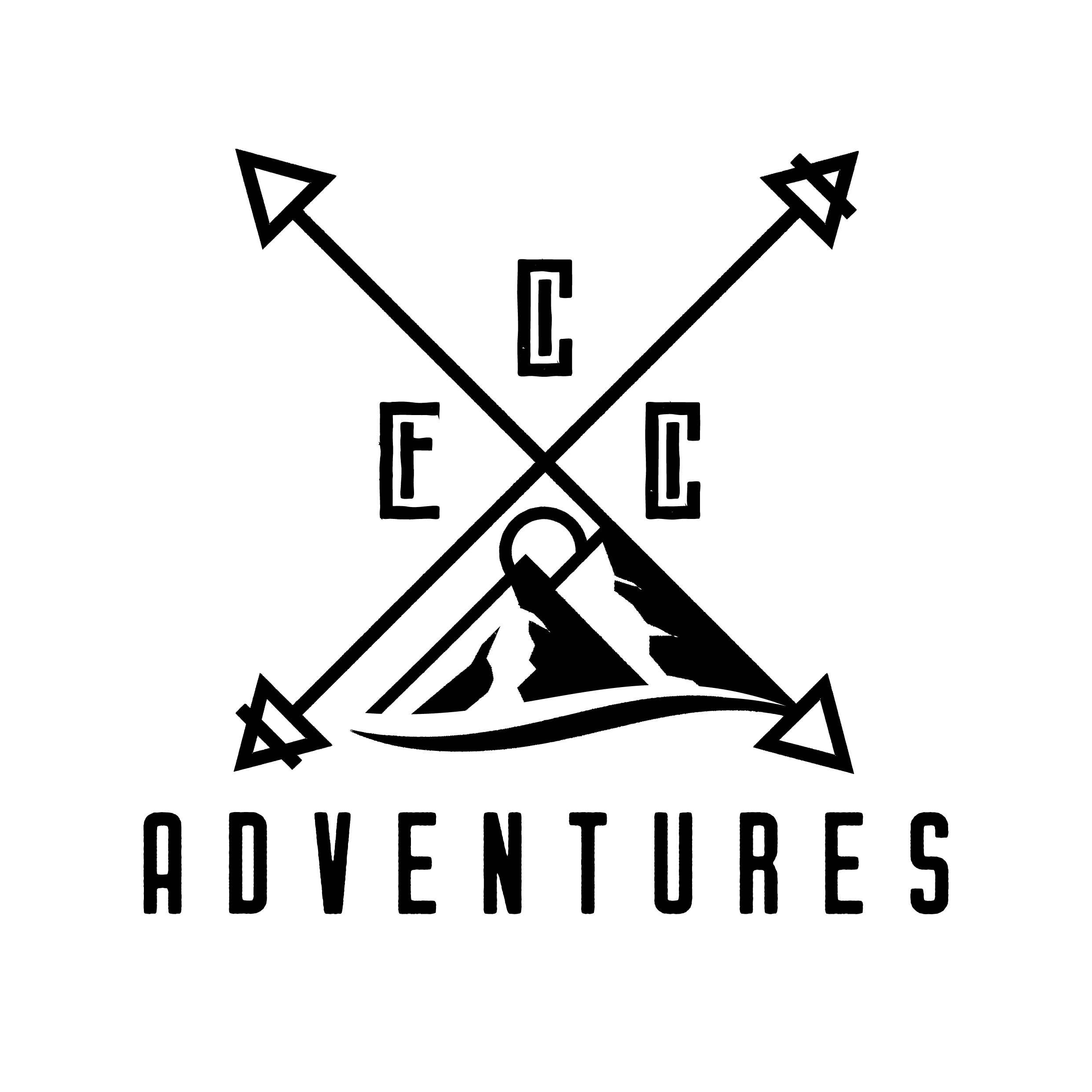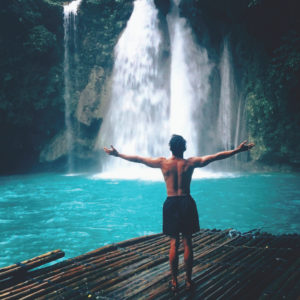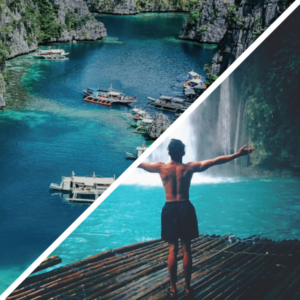Description
kilimanjaro

Wildlife

View Points

Water Features

Greenery
Advanced
Embark on an Epic Adventure with Lemosho: Your Gateway to Kilimanjaro's Majesty
A less crowded alternative to the popular Machame, the Lemosho route is renowned for showcasing Mount Kilimanjaro’s natural beauty in all its glory. Now, it’s your turn to experience the wonders of Tanzania’s famous mountain firsthand.
Spanning 70 kilometers (42 miles) and culminating at the Uhuru peak, towering 5,895 meters (19,341 feet) above sea level, the Lemosho route promises an exhilarating journey through diverse landscapes. Beginning with a scenic drive from Moshi or Arusha to Londorossi Gate, this route unveils Kilimanjaro’s splendor in stages.
Your adventure kicks off amidst lush rainforests, gradually ascending to the expansive Shira Plateau, before navigating icy terrains and high alpine deserts. Revel in sweeping vistas along one of Kilimanjaro’s most picturesque routes, boasting lower traffic until it intersects with the Machame Route.
With its newer trail and stunning scenery, Lemosho emerges as the perfect choice for your ascent.
But what about success rates? Rest assured, Lemosho boasts an impressive track record. With 8 days on the mountain, your chances of summiting soar to 90%. Even with a 7-day hike, success remains high at 85%, ensuring your dreams of reaching the top are possible.
To maximize your journey’s success, heed these route tips: maintain a steady pace, pack plenty of snacks for energy boosts, stay hydrated, and engage in pre-trek training to enhance your hiking prowess.
Opt for our 7-day itinerary for an optimal altitude acclimatization schedule. Trek through rainforests, traverse beneath icefields on the Southern Circuit, and conquer Barafu before descending via the Mweka route.
With daily ascents ranging from 900m to 1,200m, previous trekking experience is recommended (which we’d love to help get you covered). Expect challenging terrain, altitude variations, and varying weather conditions, requiring both physical and mental resilience.
Join us on Lemosho, where every step brings you closer to Kilimanjaro’s summit. It’s time to turn your dreams into reality atop Africa’s tallest peak.
Upcoming dates
| DATE | PRICE |
|---|---|
|
Saturday, September 14, 2024 – Friday, September 20, 2024
|
AED 8,500 |
NOTE: All trekkers must organize their flights to Kilimanjaro International Airport (JRO)
Trip Details
Schedule
ARRIVAL: Friday, September 13, 2024
— Arrival (private transfer from JRO to your hotel)
— Full pre-climb briefing (can be done either at night or early morning the next day)
DAY 1: Saturday, September 14, 2024
LEMOSHO TRAILHEAD – MTI MKUBWA CAMP
— Pick up from hotel and drive to Londrosi Gate (approx. 3.5 hours from Moshi)
— Register at Londrosi Gate
— Drive further 12km on a forest track to Lemosho starting point
— Enter the rainforest and start the ascent
— Witness Tanzania’s wildlife, such as Black and White Colobus monkeys, small antelopes, (buffalos and elephants if you’re lucky enough!)
— Arrive at Mti Mkubwa Camp (Big Tree Camp)
DAY 2: Sunday, September 15, 2024
MTI MKUBWA CAMP – SHIRA 2 CAMP
— Rise early for breakfast
— Begin climbing a slightly steeper gradient through the moorland vegetation zone
— Enjoy fantastic views of Kibo, the summit cone of Mt. Kilimanjaro
— Continue along a rocky ridge to Shira Plateau, a collapsed volcanic crater and the first of Kilimanjaro’s three volcanic cones to expire
— Hike across the rocky ridge onto Shira Plateau
— See the easterly side and the western breach with its dramatic glaciers
— Walk a short distance to reach the Shira Two Campsite.
DAY 3: Monday, September 16, 2024
SHIRA CAMP 2 – BARRANCO CAMP VIA LAVA TOWER
— Start the day by leaving Shira Camp and trek through semi-desert and rocky landscapes.
— Reach Lava Tower, a 300ft high volcanic rock formation, and ascend the rocky scree path for panoramic views.
— Descend steeply into the Barranco Valley.
— This may be a tougher day for some hikers due to altitude sickness symptoms.
— Finish the climb at almost the same elevation as you started, which is good practice for acclimatization for summit day. Barranco Camp is located below the impressive Barranco Wall in a beautiful, sheltered valley.
DAY 4: Tuesday, September 17, 2024
MOIR HUT – BARRANCO CAMP – KARANGA CAMP
— Begin the day with breakfast and prepare for a shorter day of hiking to aid acclimatization.
— Start by ascending the Barranco Wall and hiking through glacial valleys.
— Cross a series of hills and valleys after reaching the top of the wall.
— Descend into Karanga Valley and climb one steeper section before reaching Karanga Camp.
— Relax and rest at Karanga Camp in the afternoon before dinner and overnight stay.
DAY 5: Wednesday, September 18, 2024
KARANGA CAMP – BARAFU CAMP
— After breakfast, leave Karanga Camp and head towards the Mweka Trail junction
— Continue along the rocky ridge for 1 to 2 hours before arriving at Barafu Camp
— Admire stunning views of Mt. Kilimanjaro’s summit from various angles
— Tents will be pitched along a narrow and rocky ridge with high winds, so take time to familiarize yourself with the surroundings before nightfall
— Rest for the night at Barafu Camp and prepare for the upcoming hike to the summit
DAY 6: Thursday, September 19, 2024
BARAFU CAMP – UHURU PEAK – MWEKA CAMP
— Just before midnight, begin final ascent to summit
— Head northwest through heavy stone scree, following multiple switchbacks between Ratzel and Rebmann glaciers
— Reach Stella Point (5,685m) and take a short rest
— Hike along the crater rim for another hour to reach Uhuru Peak
— Enjoy the achievement of reaching the “Roof of Africa”
— Descend within good time to ensure rest back at Barafu Camp
— Gather belongings and descend to Mweka Hut (3,100m) for dinner and sleep.
DAY 7: Friday, September 20, 2024
MWEKA HUT – MWEKA GATE
— Begin trek to Mweka Gate through the forest
— Arrive at Mweka Gate and receive certificates for successful hikers
— Drive back to hotel
— Take a shower and freshen up
— Enjoy dinner!
— Celebrate with drinks (alcoholic and non-alcoholic)!
DEPARTURE: Saturday, September 21, 2024
— Recovery & Departure
What’s Included
— 3-star hotel accommodation before and after your climb on a bed & breakfast basis
— Group airport transfers
— Transfers to and from the mountain
— National Park entry, and climbing fees
— Rescue fees
— A fully supported climb (average ratio of support staff to climbers is 4:1)
— All meals and drinking water on the mountain
— Private portable toilet
— Access to first aid kit and emergency oxygen
— A certificate documenting your summit ascent
— High-quality mess and sleeping tents with a comfortable foam mattress
— Meals and drinks on the mountain (breakfast, lunch & dinner)
Exclusions
— International flights and visas
— Tips for your guide and crew (Industry standard USD 150 – USD 250 per trekker)
— Travel insurance (you must be insured for trekking up to 6000m)
— Your personal trekking gears
— Snacks on the mountain
— Meals and drinks not on the mountain
What to bring
Technical Clothing
1 – Waterproof Jacket, breathable with hood
1 – Insulated Jacket, synthetic or down, warm
1 – Soft Jacket, fleece or soft-shell
3 – Long Sleeve Shirt, light-weight, moisture-wicking fabric
1 – Short Sleeve Shirt, light-weight, moisture-wicking fabric
1 – Waterproof Pants, breathable (side zipper recommended)
2 – Hiking Pants
1 – Fleece Pants
1 – Shorts (optional)
1 – Long Underwear, moisture-wicking fabric
4 – Underwear, moisture-wicking fabric recommended
3 – Sport Bra (women)
Headwear
1 – Brimmed Hat, for sun protection
1 – Knit Hat, for warmth
1 – Balaclava or Buff (recommended)
Handwear
1 – Gloves, warm (waterproof recommended)
1 – Gloves, light
Footwear
1 – Hiking Boots or Shoes, warm, waterproof
4 – Socks, wool or synthetic
1 – Gaiters, waterproof (optional)
Accessories
1 – Sunglasses Sunglasses or Goggles
1 – Backpack Cover, waterproof (optional)
1 – Water Bottle (Nalgene, 32 oz.)
1 – Water Bladder (Camelbak type, 3 liters)
1 – Towel, lightweight, quick-dry (optional)
Stuff Sacks, Dry Bags or “Ziploc”-Type Plastic Bags, to keep gear dry and separate.
Note that there is a general ban on plastic bags in Tanzania, however, Ziploc-type bags for toiletries are permitted for tourists.
Equipment
1 – Sleeping Bag, warm, four seasons*
1 – Camp Pillow, inflatable (optional)
1 – Trekking Poles, collapsable (highly recommended) *
1 – Head Lamp, with extra batteries
1 – Duffel Bag, 70L-90L capacity, for porters to carry your equipment
1 – Daypack, 30-35L capacity, for you to carry your personal gear
*may be rented on location
Other
— Toiletries
— Prescriptions
— Sunscreen
— Lip Balm
— Insect Repellent, containing DEET
— First Aid Kit
— Face Mask
— Hand Sanitizer
— Toilet Paper
— Wet Wipes (recommended)
— Snacks, light-weight, high calorie, high energy (optional)
— Electrolytes, powder or tablets (optional)
— Camera, with extra batteries (optional)
— Paperwork
— Trip Receipt
— Passport
— Visa (available at JRO)
— Immunization Papers
— Insurance Documents
Note: Kilimanjaro operates an absolutely strict limit of 15kg per porter for your main equipment bag. This limit includes your sleeping bag, even if it is rented from us. This is more than sufficient for your needs on the mountain. Your bag will be weighed before you leave the hotel to start the climb and if it is overweight you will have to take items out and leave them at the hotel.
Trail Info
DAY 1: LEMOSHO TRAILHEAD – MTI MKUBWA CAMP
Trail Time: 3 – 4 hours
Distance: 5 KM
Elevation Gain: 2,800 M
Max Altitude: 2,895 M
DAY 2: MTI MKUBWA CAMP – SHIRA 2 CAMP
Trail Time: 7 – 8 hours
Distance: 10 KM
Elevation Gain: 1,000 M
Max Altitude: 3,800 M
DAY 3: HIRA CAMP 2 – BARRANCO CAMP VIA LAVA TOWER
Trail Time: 6 – 7 hours
Distance: 12 KM
Elevation Gain: 3,800 M
Max Altitude: 4,550 M
DAY 4: MOIR HUT – BARRANCO CAMP – KARANGA CAMP
Trail Time: 4 – 5 hours
Distance: 5 KM
Elevation Gain: 200 M
Max Altitude: 4,000 M
DAY 5: KARANGA CAMP – BARAFU CAMP
Trail Time: 3 – 4 hours
Distance: 6 KM
Elevation Gain: 605 M
Max Altitude: 4,700 M
DAY 6: BARAFU CAMP – UHURU PEAK – MWEKA CAMP
Trail Time: 12 – 14 hours
Distance: 17 KM
Elevation Gain: 1,295 M
Elevation Loss: 2,795 M
Max Altitude: 5,895 M
DAY 7: MWEKA HUT – MWEKA GATE
Trail Time: 3 – 4 hours
Distance: 10 KM
Descent: 1,300 M
Max Elevation: 3,100 M
FAQs
Tanzania Visa Requirements
Valid Passport: All citizens are required to have a valid passport which is valid for a minimum of six months until the day of completion of your safari.
Yellow Fever Certificate: In case you are passing through a country with a risk for yellow fever virus transmission, it is essential that you show a yellow fever certificate to the Immigration Officer when you land in Tanzania.
Methods of Payment: There are various methods of payments where multiple types of credit and debit cards like Visa and American Express are also accepted. You can also pay through the process of PayPal as a standard payment method.
Flight Itinerary: The Tanzanian Immigration Officials also ask about your flight itinerary.
Passport Digital Scan: You also need to upload a copy of your passport bio page for the e-Visa application, along with carrying two recent passport photos with you to enter Tanzania.
NOTE: Visa requirements for Tanzania may vary depending on your nationality and the purpose of your visit.
Visa Application
Visa on Arrival: Nationals of most countries can obtain a visa on arrival at any international airport or border crossing in Tanzania. The visa on arrival is valid for up to 90 days and can be extended for up to 6 months.
E-Visa: Some nationalities are eligible to apply for an e-Visa online before their trip. This is a convenient option that allows travelers to avoid the queues at the airport or border.
Visa at Tanzanian Embassy: Some nationalities are required to apply for a visa at the nearest Tanzanian embassy or consulate in your home country.
To obtain a visa on arrival or an e-Visa, you will need to provide the following:
— A valid passport with at least 6 months of validity remaining.
— A passport photo.
— A return ticket or onward ticket.
— Payment of the visa fee (which varies depending on your nationality and the type of visa you are applying for). USD 100 for USA and Canada citizens and USD 50 for other countries.
It is important to note that visa requirements and regulations can change frequently, so it is recommended to check with the Tanzanian embassy or consulate in your home country or the official government website for the latest information before you travel.
Vaccination rules
Though not mandated to travel to Tanzania, the World Health Organization (WHO) recommends that travelers be vaccinated against the following diseases:
Yellow fever (mandatory if coming from a country that is listed as High Risk for Yellow Fever transmission): Tanzania requires proof of yellow fever vaccination for all travelers arriving from countries where yellow fever is endemic. The vaccine should be administered at least 10 days before travel.
Hepatitis A and B: These are recommended for all travelers to Tanzania.
Conversion rate and what the general cost of things are
The currency used in Tanzania is the Tanzanian shilling (TZS). As of May 2023, the exchange rate is approximately 1 USD = 2,400 TZS.
The cost of things in Tanzania can vary depending on the location, type of service, and the current economic situation.
What to expect with accommodation/food/weather
Accommodation
Tanzania offers a wide range of accommodation options, from budget-friendly hostels and guesthouses to luxury resorts and lodges. Accommodation prices can vary depending on the location and season, with peak season (June-October and December-January) being more expensive. Budget-friendly accommodation can range from simple dorm rooms or basic private rooms, while mid-range and luxury accommodations offer more amenities such as swimming pools, restaurants, and tour services.
Food
Tanzanian cuisine is a mix of African, Indian, and Arabic influences. Local food is typically simple and hearty, with a focus on grains, vegetables, and meats. Some popular dishes include ugali (a maize porridge), nyama choma (grilled meat), and samosas (savory pastry). Vegetarian and vegan options are also available. In cities and tourist areas, international cuisine is also available, such as Italian, Indian, and Chinese.
Weather
Tanzania has a tropical climate, with two distinct seasons: the dry season (June-October and December-March) and the rainy season (November, April and May). The dry season is the peak tourist season, with sunny and warm weather, low humidity, and comfortable temperatures averaging between 20-30°C (68-86°F) during the day. The rainy season brings higher humidity, with daily afternoon showers and thunderstorms. Temperatures can still be warm, ranging from 20-28°C (68-82°F). The best time to visit Tanzania depends on your interests and itinerary. The dry season is ideal for wildlife viewing and outdoor activities, while the rainy season can be a good time to see lush vegetation and migratory birds.
Transportation to and from airport and locations
For your trip, travel arrangements to and from your accommodation will be arranged by the Organizers. However, in case of any logistical issues, Tanzania has a range of transportation options for getting to and from the airport and around the country:
TAXIS
Taxis are available at most airports and can be a convenient way to get to your destination. It is recommended to use registered taxis or those recommended by your accommodation to avoid scams or unsafe rides. Negotiate the fare with the driver before getting in.
CAR RENTAL
Car rental services are available in major cities and tourist areas. It is recommended to rent from a reputable company and have an international driver’s license. Driving in Tanzania can be challenging due to poor road conditions and heavy traffic.
PRIVATE TRANSFERS
Private transfers can be arranged through your accommodation or travel agency. This is a convenient and comfortable option, especially if you are traveling in a group or with lots of luggage
Who to contact if you have issues with visa or plane
If you have issues with your visa or flight upon arrival in Tanzania, you can contact the appropriate authorities for assistance.
For visa issues, you can seek assistance from the Tanzanian Immigration Authority or the Tanzanian Embassy or Consulate in your home country. It is recommended to have all necessary documents and information readily available, such as your passport, visa application, and travel itinerary.
For flight issues, you can seek assistance from the airline or airport staff. They can provide information on flight schedules, delays, and cancellations, and assist with rebooking or arranging alternative travel options if necessary.
If you booked your trip through a travel agency, you can also contact them for assistance. They may be able to provide additional support and advice on how to handle the situation.
Upon arrival at the airport, there are information desks and customer service representatives available to assist with any queries or issues you may have. You can also seek assistance from the airport authorities or the relevant government agencies as necessary
Refund and Cancellation Policy
— Cancellation received 30 days or more before the tour starts: No Cancellation Fees will be charged
— Cancellation received 11 – 29 days before the tour starts: 40% Cancellation Fee will be charged
— Cancellation received 3 – 10 days before the tour starts: 60% Cancellation Fee will be charged
— Cancellation received within 48hrs before the tours starts: 100% Cancellation Fee will be charged














